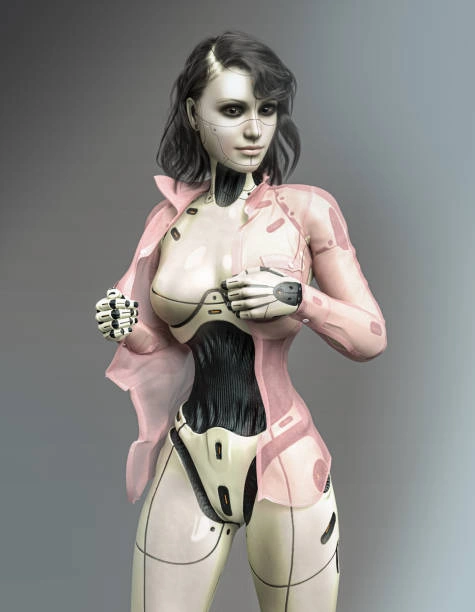AI is revolutionizing the fashion industry in ways that were unimaginable just a few years ago. From creating virtual fashion shows to designing custom garments, AI is making a significant impact. But one of the most intriguing and controversial developments is AI undressing. This technology has the potential to reshape the fashion landscape, but it also comes with ethical implications and privacy concerns. In this blog post, we will explore the various facets of AI undressing, its potential applications, and the ethical considerations that come with it.
What are the Ethical Implications of Using AI for Creating Realistic Depictions of Undressing?
The advent of AI undressing technology raises several ethical questions. On one hand, it offers incredible possibilities for virtual fashion shows, digital modeling, and even online shopping experiences. On the other hand, it can be misused for non-consensual purposes, like creating unauthorized images that invade personal privacy.
To mitigate these risks, strict guidelines and regulations must be put in place. Consent should be a fundamental requirement, and unauthorized use of this technology should be penalized. Additionally, AI developers should implement robust security measures to prevent misuse.
Ensuring Consent and Respecting Boundaries
Consent is paramount when it comes to using AI for undressing simulations. AI systems must include features that ensure explicit consent from individuals before generating any undressing simulations. This could involve a multi-step verification process where individuals can review and approve how their images will be used.
Developers should also consider incorporating mechanisms that allow individuals to withdraw their consent at any time. This would ensure that people retain control over their digital representations, thereby respecting their personal boundaries.
Applications of AI Undressing Technology in Fashion and Modeling Industries

AI undressing technology has some exciting applications in the fashion and modeling industries. For instance, virtual try-ons can significantly enhance the online shopping experience. Customers can see how clothes fit and look on them without physically trying them on, making shopping more convenient and efficient.
In the modeling industry, AI undressing can assist in creating realistic digital models. These models can be used for virtual fashion shows, photo shoots, and even advertising campaigns. This not only saves time and resources but also opens up opportunities for more diverse and inclusive representation.
Handling Privacy Concerns
Privacy is a major concern when it comes to AI undressing technology. Unauthorized use of this technology can lead to severe privacy violations. To address this, developers must prioritize data protection and implement stringent security protocols.
Encrypting data and using secure servers can help protect sensitive information. Additionally, transparency regarding how the data is collected, stored, and used is essential for building trust among users.
Advancements Making Undressing Simulations More Lifelike
The field of AI is advancing rapidly, making undressing simulations increasingly lifelike and accurate. Techniques like deep learning and neural networks are being employed to enhance the realism of these simulations. These advancements not only improve the visual quality but also ensure that the simulations are anatomically accurate.
However, with increased realism comes greater responsibility. Developers must ensure that these advancements are used ethically and do not contribute to any form of exploitation or harm.
Ethical Considerations in Developing AI Technologies
When developing AI technologies related to personal privacy, several ethical considerations must be taken into account. First and foremost is the issue of consent, as mentioned earlier. Additionally, fairness and non-discrimination should be prioritized to ensure that these technologies do not perpetuate existing biases.
Transparency in AI development is also crucial. Users should be informed about how the technology works, what data it uses, and how the results are generated. This transparency can go a long way in building trust and ensuring ethical use.
Enhancing Body Positivity and Self-Acceptance
AI can be a powerful tool for promoting body positivity and self-acceptance. By showcasing diverse body types and inclusive fashion, AI can help challenge societal beauty standards. Virtual try-ons can allow individuals to see themselves in a variety of styles, encouraging them to experiment and find what makes them feel confident.
This technology can also be used to create personalized style recommendations based on an individual’s body type and preferences. Such features can make fashion more accessible and enjoyable for everyone.
Impact on Body Image and Self-Expression
AI undressing technology can significantly impact how we approach body image and self-expression. By providing realistic and diverse representations, it can help individuals develop a healthier relationship with their bodies. This, in turn, can enhance their self-esteem and encourage self-expression through fashion.
However, it’s essential to use this technology responsibly. Over-reliance on digital representations can sometimes lead to unrealistic expectations. Therefore, balancing the virtual and real aspects of fashion is crucial for fostering a positive impact.
Benefits and Drawbacks of AI in Clothing Fitting and Styling
The use of AI in clothing fitting and styling comes with several benefits. It offers convenience, personalized recommendations, and inclusive fashion options. However, there are also potential drawbacks to consider.
One of the main concerns is the accuracy of AI-generated recommendations. While AI can analyze data and make suggestions, it may not always capture the nuanced preferences of individuals. Therefore, continuous improvement and user feedback are essential for refining these systems.
Creating Inclusive and Diverse Representations
One of the most promising aspects of AI in fashion is its potential to create more inclusive and diverse representations. Traditional fashion often struggles with inclusivity, but AI can help bridge this gap by showcasing a wide range of body types, ethnicities, and styles.
This inclusivity can foster a sense of belonging and representation among diverse audiences. By seeing themselves represented in fashion, individuals can feel more connected to the industry and its offerings.
Conclusion
AI undressing technology is poised to revolutionize the fashion industry, offering numerous benefits while also posing ethical and privacy challenges. By addressing these concerns and prioritizing consent, transparency, and inclusivity, we can harness the power of AI for positive change.
For fashion enthusiasts, tech-savvy consumers, and content creators, AI undressing opens up exciting possibilities for self-expression and style exploration. As we move forward, it’s essential to use this technology responsibly, ensuring that it contributes to a more inclusive and empowering fashion landscape.
Explore more about the latest advancements in AI and fashion, and join us NYHUFFPOST in shaping the future of this dynamic industry.








